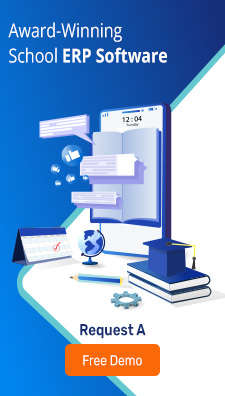
With the changes in technology, libraries are also adapting to fit into a world that is becoming increasingly digital. So much information is available. Students should be able to quickly locate and use the appropriate research materials to strengthen their ideas. The library management system for educational institutions is a response to all the challenges faced by the libraries to bridge the gap between the students and the institution’s information bank. A library management system can either be a standalone system, or it can be a part of a complete School ERP. The institution must find the right solution for its library. It will help to reduce operational costs and save time for both the user and library staff.
Features Required for an Efficient Library Management System for Educational Institutions
It can be daunting if it is the first time the educational institution is creating an automated library management system. However, you must make the right decision because the system must fit your requirements. Here are the features you need for an efficient library management system for educational institutions.
1. Acquisition Management Module
Libraries must refresh their resources, but the acquisition cycle can be manually intensive. When you have an acquisition management module, it becomes easy to keep track of all the different cogs involved. First, it starts with the selection of resources. Then, it is done with the pre-order bibliographic searching of the library catalog to avoid duplication.
- Order Placement
- Goods received
- Quality checked
- Invoices processed
- Payment made to the vendors
- Records of the acquisitions maintained
- Automated allocation of booking IDs to new acquisitions
2. Catalog Management Module
Catalog management is one of the essential features of library management systems for educational institutions. The method with which metadata is created represents the knowledge resources of the library, like articles, documents, maps, audio clips and digital content. The software digitally keeps track of what is available in the library and catalogs the content according to the title, author, subject, and publishing date.

3. User Management Module
Every library has a detailed database of users with their names, ID, login, and password. This helps to keep track of the member’s library usage. In addition, the multi-user environment ensures that many users can use the software without any issues with speed or access.
4. A Circulation Management Module
The library management system for educational institutions is integrated with smart cards, barcodes, or RFID for tracking the movement of books and stock verification. Radiofrequency Identification uses the process of automatic identification and data capture technology. First, the digital data encoded in the RFID tags, or the smart labels, are captured through radio waves. After that, they are entered directly into the computer systems. You can also read the RFID tag data outside the line of sight of an electronic reader.
5. Online Public Access Catalog
An online public access catalog system allows students to search for books, e-resources, and journals from anywhere. Therefore, even if students are not on the library premises, they can use the library resources. All they need to do is enter the login credentials and password through the web. The search results shall also offer students with direct access to the resources.
In Conclusion
You cannot deny that smart libraries are the next big thing. If you run an educational institution, 1000s of books are in the catalog. Thus, innovative technology trends convert a campus library into a smart library that uses Artificial intelligence to understand student behaviour patterns and recommend additional content. Finally, the library management system for educational institutions should keep track of the membership fees and manages individual student accounts.
Try SFT Roll Call
Latest Posts
Categories
-
- alumni management system (1)
- Attendance Management System (5)
- best educational ERP software (5)
- college admission management software (1)
- ERP (5)
- Examination Management (6)
- Institute Management Software (1)
- lesson planning solution for school (5)
- Library Management System (6)
- school management software (9)
- school management system India (1)
- student management software (2)
- Uncategorized (2)













